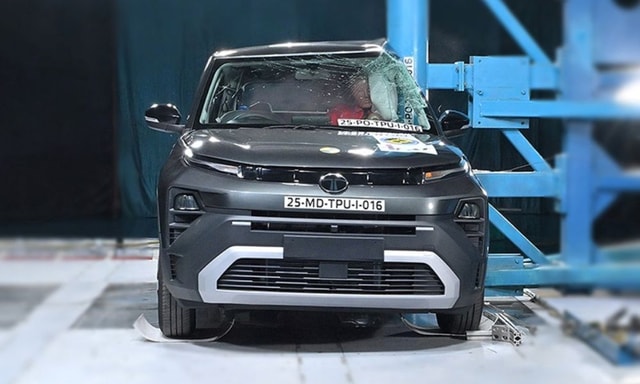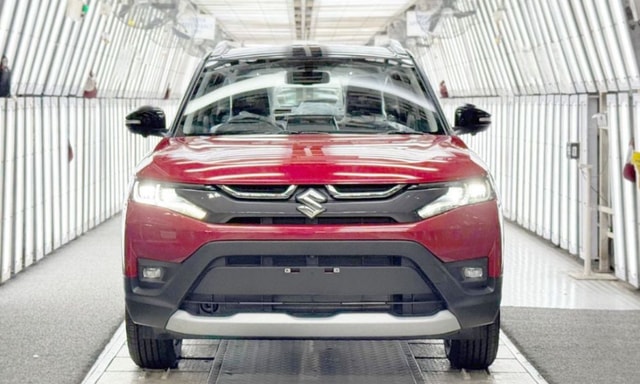Mahindra To Inspect Over 1 Lakh Units Of The XUV700 Over Wiring Issues

Mahindra has announced that it will be proactively inspecting over 1 lakh units of the XUV700 over possible issues with the wiring loom within the engine bay. The recall affects 1,08,306 units of the popular SUV that were manufactured between June 8, 2021 and June 28, 2023. The carmaker said that the vehicle’s wiring loom would be inspected for “a potential risk of abrasion cut” to the wiring.
The company also said that it would be inspecting 3,560 units of the new XUV400 electric SUV over a possible issue with the brake potentiometer. The company in its statement said that the potentiometer would be “inspected for ineffective spring return action.” The company has said that the issues with both vehicles will be rectified free of cost to the customers.
The company said that its dealers would be reaching out to owners of affected vehicles across the country.
As is known, issues with the wiring could lead to possibilities of short circuits or the inoperability of certain systems. It could also lead to the potential of fires. The brake potentiometer is meanwhile a sensor that is generally used to identify the pressure put on the pedal by the driver and convert that into the pressure applied on the vehicle’s brakes at the wheel.
Mahindra had late last year issued a recall for over 19,000 units of the XUV700 and Scorpio-N to inspect the rubber bellow inside bell housing for the models with the manual gearbox.
Latest News
 car&bike Team | Jan 21, 20262026 Jeep Meridian Updated With Sliding Second Row Seats; Prices Start At Rs. 23.33 LakhThe update is limited to select three-row variants of the Jeep Meridian, namely, Limited and Overland.1 min read
car&bike Team | Jan 21, 20262026 Jeep Meridian Updated With Sliding Second Row Seats; Prices Start At Rs. 23.33 LakhThe update is limited to select three-row variants of the Jeep Meridian, namely, Limited and Overland.1 min read Jaiveer Mehra | Jan 21, 2026Skoda Kylaq Classic+, Prestige+ Prices RevealedSkoda has also confirmed a new Sportline variant that will join the lineup later in the year.1 min read
Jaiveer Mehra | Jan 21, 2026Skoda Kylaq Classic+, Prestige+ Prices RevealedSkoda has also confirmed a new Sportline variant that will join the lineup later in the year.1 min read Jaiveer Mehra | Jan 20, 2026Tata Punch Facelift Bharat NCAP Crash Test Scores Revealed; Gets 5-Star RatingFacelifted internal combustion Punch secures 30.58 out of 32 for adult occupant protection and 45 out of 49 for child occupant protection.1 min read
Jaiveer Mehra | Jan 20, 2026Tata Punch Facelift Bharat NCAP Crash Test Scores Revealed; Gets 5-Star RatingFacelifted internal combustion Punch secures 30.58 out of 32 for adult occupant protection and 45 out of 49 for child occupant protection.1 min read Seshan Vijayraghvan | Jan 20, 2026Maruti Suzuki To Invest Rs. 35,000 Crore For Setting Up New Manufacturing Plant In GujaratThe new facility will come up in Khoraj, on 1,750 acres of land provided by Gujarat Industrial Development Corporation (GIDC).2 mins read
Seshan Vijayraghvan | Jan 20, 2026Maruti Suzuki To Invest Rs. 35,000 Crore For Setting Up New Manufacturing Plant In GujaratThe new facility will come up in Khoraj, on 1,750 acres of land provided by Gujarat Industrial Development Corporation (GIDC).2 mins read car&bike Team | Jan 20, 2026Bajaj Pulsar 125 Updated With LED Headlamp, Indicators; Prices Start From Rs 89,910Updates are limited to the Pulsar 125 Carbon Fibre series.1 min read
car&bike Team | Jan 20, 2026Bajaj Pulsar 125 Updated With LED Headlamp, Indicators; Prices Start From Rs 89,910Updates are limited to the Pulsar 125 Carbon Fibre series.1 min read Seshan Vijayraghvan | Jan 20, 2026All-Electric Toyota Urban Cruiser EBella Introduced; Booking Open For Rs. 25,000Prices for the Toyota Urban Cruiser eBella are yet to be announced, but bookings are open at Rs. 25,000.1 min read
Seshan Vijayraghvan | Jan 20, 2026All-Electric Toyota Urban Cruiser EBella Introduced; Booking Open For Rs. 25,000Prices for the Toyota Urban Cruiser eBella are yet to be announced, but bookings are open at Rs. 25,000.1 min read
 Bilal Firfiray | Jan 21, 2026Tata Punch Facelift Review: New Turbo Engine; Same Old SoulWith the update, the Tata Punch facelift retains its character of being a healthy runabout, which is perfect for Indian roads. But have these changes made it any better?7 mins read
Bilal Firfiray | Jan 21, 2026Tata Punch Facelift Review: New Turbo Engine; Same Old SoulWith the update, the Tata Punch facelift retains its character of being a healthy runabout, which is perfect for Indian roads. But have these changes made it any better?7 mins read Amaan Ahmed | Jan 17, 2026Bajaj Chetak C25 First Ride Review: Basic, Likeable E-Scooter For First-Time RidersThe Chetak C25, in quite a few ways, is poles apart from the larger and more powerful 30 and 35 Series models, but in its mannerisms, it is very much a Chetak.8 mins read
Amaan Ahmed | Jan 17, 2026Bajaj Chetak C25 First Ride Review: Basic, Likeable E-Scooter For First-Time RidersThe Chetak C25, in quite a few ways, is poles apart from the larger and more powerful 30 and 35 Series models, but in its mannerisms, it is very much a Chetak.8 mins read Bilal Firfiray | Jan 9, 2026Toyota Urban Cruiser Hyryder: 10,000 km Long-Term ReviewAfter spending over three months and 10,000 km with the Toyota Urban Cruiser Hyryder Hybrid, we were impressed by its real-world mileage, seamless hybrid, practical comfort, and Toyota reliability. Is it the best C-SUV then?5 mins read
Bilal Firfiray | Jan 9, 2026Toyota Urban Cruiser Hyryder: 10,000 km Long-Term ReviewAfter spending over three months and 10,000 km with the Toyota Urban Cruiser Hyryder Hybrid, we were impressed by its real-world mileage, seamless hybrid, practical comfort, and Toyota reliability. Is it the best C-SUV then?5 mins read Seshan Vijayraghvan | Jan 8, 20262026 Mahindra XUV 7XO Review: Big On Tech, Bigger On ComfortThe new Mahindra XUV 7XO is flashier, feature packed, and comes with more advanced tech. But are the changes just incremental or actually substantial?1 min read
Seshan Vijayraghvan | Jan 8, 20262026 Mahindra XUV 7XO Review: Big On Tech, Bigger On ComfortThe new Mahindra XUV 7XO is flashier, feature packed, and comes with more advanced tech. But are the changes just incremental or actually substantial?1 min read Preetam Bora | Jan 10, 2026Simple One Gen 2 First Ride Review: 265 km Claimed Range!The Gen 2 model of Simple Energy’s first electric scooter gets a fair few updates, including new features, tech, more range and lighter weight. We spent a couple of hours with the Simple One Gen 2 to find out if it manages to impress.6 mins read
Preetam Bora | Jan 10, 2026Simple One Gen 2 First Ride Review: 265 km Claimed Range!The Gen 2 model of Simple Energy’s first electric scooter gets a fair few updates, including new features, tech, more range and lighter weight. We spent a couple of hours with the Simple One Gen 2 to find out if it manages to impress.6 mins read





















































































































